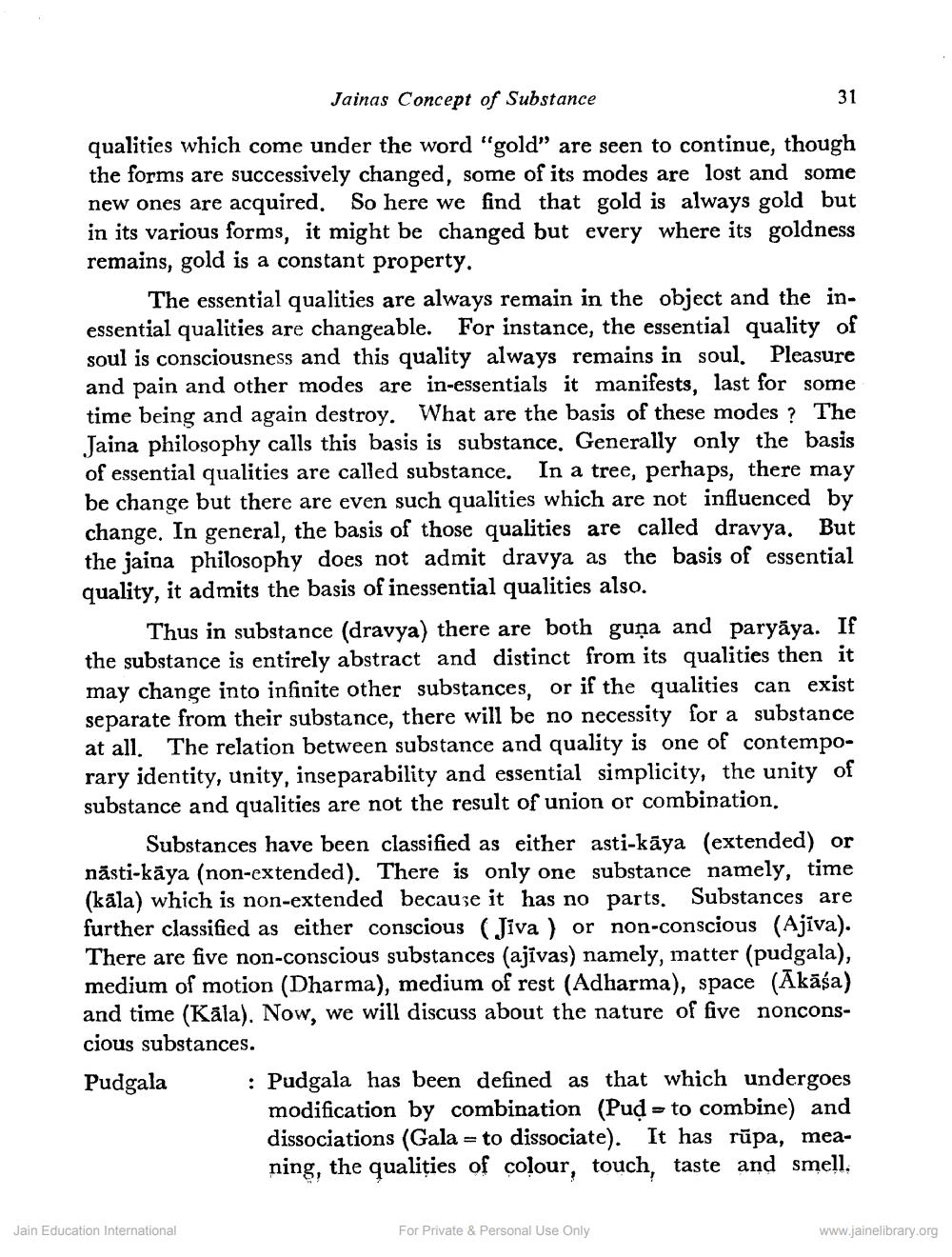Book Title: Jainas Concept of Substance Author(s): N K Singh Publisher: USA Federation of JAINA View full book textPage 2
________________ 31 Jainas Concept of Substance qualities which come under the word "gold" are seen to continue, though the forms are successively changed, some of its modes are lost and some new ones are acquired. So here we find that gold is always gold but in its various forms, it might be changed but every where its goldness remains, gold is a constant property. The essential qualities are always remain in the object and the inessential qualities are changeable. For instance, the essential quality of soul is consciousness and this quality always remains in soul. Pleasure and pain and other modes are in-essentials it manifests, last for some time being and again destroy. What are the basis of these modes? The Jaina philosophy calls this basis is substance. Generally only the basis of essential qualities are called substance. In a tree, perhaps, there may be change but there are even such qualities which are not influenced by change. In general, the basis of those qualities are called dravya. But the jaina philosophy does not admit dravya as the basis of essential quality, it admits the basis of inessential qualities also. Thus in substance (dravya) there are both guna and paryāya. If the substance is entirely abstract and distinct from its qualities then it may change into infinite other substances, or if the qualities can exist separate from their substance, there will be no necessity for a substance at all. The relation between substance and quality is one of contemporary identity, unity, inseparability and essential simplicity, the unity of substance and qualities are not the result of union or combination. Substances have been classified as either asti-kāya (extended) or nästi-käya (non-extended). There is only one substance namely, time (kāla) which is non-extended because it has no parts. Substances are further classified as either conscious (Jiva) or non-conscious (Ajiva). There are five non-conscious substances (ajīvas) namely, matter (pudgala), medium of motion (Dharma), medium of rest (Adharma), space (Akāśa) and time (Kāla). Now, we will discuss about the nature of five nonconscious substances. Pudgala : Pudgala has been defined as that which undergoes modification by combination (Puď – to combine) and dissociations (Gala = to dissociate). It has rūpa, meaning, the qualities of colour, touch, taste and smell. Jain Education International For Private & Personal Use Only www.jainelibrary.orgPage Navigation
1 2 3 4 5 6
